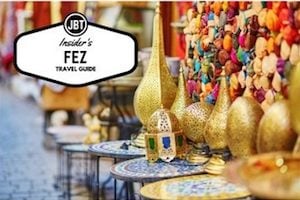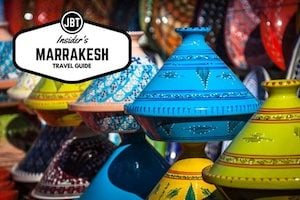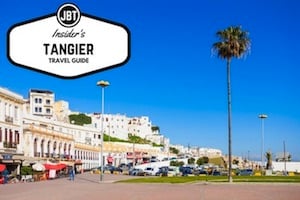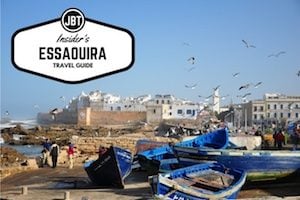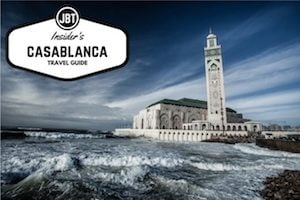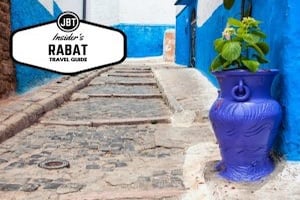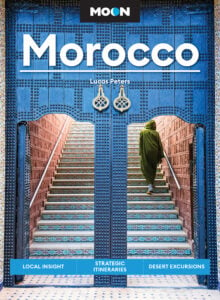Photography in Morocco is known among photographers for being extremely challenging. Though in some part this is because of the natural elements, such as sand in the desert and snow on the mountains, what can really make photography difficult in Morocco are the people of Morocco!

If you’re reading this, undoubtedly you have seen incredible photos of this amazing country. I know I have! Over the years, we have had clients return to Morocco after decades of being away. They’ve shared with us some of their wonderful photos and amazing memories. Not that long ago, it seems, Morocco was a bit easier of a photography assignment. These days, that’s not exactly the case. Moroccans now famously shudder at the sight of a camera shutter. They are known to sometimes be aggressive, demanding money or demanding that you delete the photo you possibly took of them. Others are quieter, though will hide their faces. This is particularly the case for women around the country, both in the cities and in smaller towns, but perhaps most particularly in and around Chefchaouen.
So what gives? In part, over-aggressive tourists with their cameras pointed in the faces of people going about their daily lives have taken a toll on some of the population, particularly in urban areas like Marrakesh and Fez. There is also a culturally-rooted adverse association with images around much of the country.
All of this means that, as photographers, we really have our work cut out for us. However, if you can spare some kindness and stuff a bit more patience into your carry-on, I think you’ll find that you will go a long, long way toward making some beautiful images that you can share with your friends and family back home.

Here are some other tips to help you with your photography in Morocco:
Photography in Morocco: General Tips
- Photographers who are discreet and polite, ask permission, and tip occasionally when asked, generally make new friends and have a pleasant experience. Anywhere in the world, it is respectful to ask to photograph a person or a person’s shop before taking a photo. Strangers on this street will usually decline. But they will be much happier you asked and you never know. Every once in a while someone will say yes!
- Most shop owners will agree to have their photo taken, particularly if you’ve just spent some money in their shop.
- If you’re learning Moroccan Arabic, this is the time to practice. If you can ask in darija to take a person’s photo, you’ll have a better chance of success.
- Occasionally you will be asked to pay, generally a token of 5-10Dh. This is totally normal. If you’re doing a lot of street photography, in particular in the old medinas, or taking a photo of an artisan or worker, this is a small payment you should be prepared to give.
- On the Jemaa el-Fnaa in Marrakesh, it is customary to pay for photos of the performers. This is how they make their money. However, if you spend some time watching the monkey handlers and snake charmers, you probably won’t like how they treat their animals.

- For a quieter experience, head out early in the morning for the magic hour. Most Moroccan cities don’t really wake up until 10am or so. You’ll be able to feel the city wake up, maybe catch some of the more pious men walking to and from the mosque for their morning prayers, or perhaps get some architectural photos that are more difficult to take when more people are around.
- Speaking of quiet…. if your camera has a silent shutter option, this can be a good way to be more discreet with your photography, though you’ll want to watch out for banding in your images, particularly with some of the lighting in the medinas at night. The discretion the silent shutter provides for quieter areas (such as some of the Quranic Schools) and even on the street make for a less intrusive photography experience, both for you and the people around you.
- Most people love selfies. Moroccans are no exception to the selfie-craze. If you have an experience with someone and would like to mark it with that person by taking a selfie, snap away! Obviously, smartphones are great for this.
- Street photography is easily the most difficult sort of photography in Morocco. Photographers, remember that patience I told you to pack? This is where you need it. Depending on where you are, how confident you are, what the people are like around you… you will likely end up with a mix of some more aggressive people asking you to delete “their” picture, people demanding money for pictures they think you took of them, or general mockery and harassment. A good strategy is to tuck away in a quiet corner, carefully compose your shot, and wait for the right person to walk by.
- Be smiling, friendly, and if someone gives you a hard time, be humble and apologetic.

Photography in Morocco: What Camera Should You Use?
For camera bodies, there are LOTS of great products on the market. Professional and hobby photographers basically use all of the systems out there on the market, from Canon and Nikon, to Sony and Pentax. For what it’s worth, I prefer the Sony a7iii mirrorless system. I find this to be the best all-around system to keep my travel kit light weight while keeping all the advantages a full-frame sensor allows. Coupled with their great auto-focus system and wonderfully sensitive sensor for low-light situations, it is a real winner for travel photography in my book!
Note: If you are new to the Sony a7 series of camera, definitely look Mark Galer’s YouTube tutorials as well as his free downloadable PDF books. He probably knows more about this camera system than anyone else on this planet. Here is his website: https://www.markgaler.com.
Canon and Nikon now have great full-frame mirrorless systems as well, though native lenses are a bit scarcer and the autofocus hasn’t quite caught up to Sony. The Fuji X-T3 is also a great camera, though it is a crop sensor. If I were to use any other system, this would probably be it. Fuji’s color science for jpeg is great, so if you’re not shooting RAW and don’t mind the crop sensor, definitely take a look at this camera, particularly when coupled with Fuji’s excellent 23mm f/14 prime lens! Sony’s a6000 series is also an extremely popular crop-sensor system and one I see around the country a lot.
Heck… even smartphones have great cameras. Not only do smartphones work wonders these days, but it’s the camera you are most likely to have with you all the time. As an added bonus, people around the country are much less likely to hassle you if you’re using your phone to capture images or video, making for some great candid shots. The latest iPhone 11 Pro comes with a really good photo array, though you’ll want to spend some time learning about the different zoom functions, lighting options, and how to quickly editing your photos before your flight takes off!
In general, take the camera you are most comfortable with! You don’t want to spend time on your trip learning how to use a new camera… so make sure whatever you bring, you have taken the time to learn everything your camera can do. The absolute worst thing you can do is buy a new camera just a few days before traveling. This is how you can end up with so many missed shots and general fumbling around while the moment passes you because you don’t have the muscle memory yet with the new camera. Take your time. Learn your camera. When you feel confident, then start getting ready to capture some memories that will truly last you a lifetime!
How About Lenses? How Many Lenses Should I Pack?
Typically, a good all around zoom lens, like a 24mm-70mm f2.8 or 24mm-105mm f4, along with a good prime lens should be enough for most types of photography. For zooms, though there are lots of great options, I am a big fan of the Sony 24-105mm for the Sony FE system. It’s a great all-around zoom. Canon, Nikon, Fuji, and just about every other camera maker have good versions of useful lenses in this zoom range. If you’re shooting Nikon, take a long look at the 24-130mm f4. I got to play with one of these a few months ago. That little bit of extra reach is really nice to have in the medinas of Morocco.
For a prime lens, this is really up to what you shoot. 35mm – 50mm are pretty classic “street photo” lenses, though 24mm is gaining in popularity for street and environmental portraits. Ultra wide angle primes, such as a 12-16mm, are wonderful for big landscapes, architecture and some of those starry skies out in the Sahara. Meanwhile, 85-135mm are more for classic portrait styles photos. I generally opt for the super lightweight, utterly discrete Zeiss 35mm f2.8 lens for street photos and landscapes, environmental portraits, and general street photography.
If you’re interested in astrophotography, architecture, and landscapes, you might also consider an ultra wide angle lens. Though I have one, I can’t really recommend it. Right now I’m looking for something different. The Sony 20mm f1.8 G lens has gotten rave reviews. I’ll likely pick this up before my next trip out to the Sahara!
A telephoto lens can help immensely in photographing through crowds and across distances, though you’ll miss out on the interaction between the photographer and subject that can make for truly great photos. Particularly if you’re looking at birding or other wildlife, you might want to take a look at a lens like Sony’s 200-600mm f5.6-6.3 or similar. Lenses like this though are perhaps better served for use on your next safari. Around Morocco, I’m pretty happy using the Sony 70mm-300mm f4.5-5.6 Lens.

How About Other Gear? What’s Essential?
Like any other travel experience, you’ll want to decide well ahead of time how much gear you want to pack. A good idea is to lay everything out on a table and then pack it into your carry-on backpack. Unless you are used to checking camera gear, this is something you typically want to avoid doing. So, make sure everything fits in your carry-on comfortably! Depending on your shooting and travel style, you’ll see some things are more essential than others for you.
- Don’t skimp on packing the SD cards. High-speed SD cards are notoriously difficult to find in Morocco. You’ll want to make sure that you don’t lose valuable pictures you won’t be able to recreate. I usually use the Sony Tough G-series 64gb SD cards. Whatever you do, bring more SD cards than you think you’ll use!
- It’s good practice to store and back-up your photos as you go. For this reason, you’ll want to bring along a portable hard drive or two. Though others recommend more rugged hard drives, I love the lightness of the Samsung T7 Touch Portable SSD drives… a terabyte of storage in something that’s about the size of a three credit cards stacked together!
- You’ll want to make sure to bring a cleaning kit for your sensor and for your lenses. There’s nothing worse than dust and fingerprints ruining an otherwise great shot!
- A good camera strap is highly underrated! I switched to the Peak Design system a couple of years ago. Not only are the straps sturdy and comfy (as long as your lens isn’t too heavy!), but they have a great system for snapping your camera on and off. Your shoulders will thank you after 12 hours of running around Marrakesh.
- Definitely make sure you are using a screen protector for the back of your camera! Tempered glass is the best. You don’t want an accidental bump or large scratch cracking the screen while on the go.
- Make sure you’re equipped with rain gear. A rain shell (or just a plain ol’ plastic bag) will come in handy both for the rain and to protect your camera from the dust and sand in the desert.
- If you’re traveling from a country that doesn’t use the European two-plug 220 volt electric system, you’l want to make sure you have an adapter for charging your camera, phone, and other devices. Most electronics shouldn’t need an electrical convertor (i.e. from 110 volts to 220 volts). Just the plug adapter will do fine, but do double-check with the manufacturer to be certain.
- Some people use filters. Though I don’t use a lot of filters for my photography, I do use a Zeiss 77mm UV Filter on the 24-105mm zoom lens for a bit of added protection… and to get a touch of that famous “Zeiss pop” in my photos. Filters are one of those things where if you’re going to use them, you really have to buy good filters… otherwise you will have compromised your lens performance by putting a less-than-average filter in front of your really nice, likely expensive, glass. I also use a Gobe polarizing filter and ND filters, though much less frequently. If you think you might use filters, they are light and don’t take up much room so you might as well pack them!
- It’s good advice to bring a spare battery, though with the Sony a7iii, it’s not totally necessary. You can charge the battery directly in the camera and the battery itself is large enough to last a full day.
- A good day bag is a great idea. I like to pack around one that is big enough for a light jacket, iPad, camera with 2 lenses, and some other essentials. Some people like to pack bigger bags while others are happy having their camera over their shoulders all day. This depends a bit more on your travel style.
- If you’re obviously shooting a landscape, you likely won’t be bothered at all. Feel free to break out the tripods and take in the scene. I like the Manfrotto series, though there are a bunch of other manufacturers putting out great tripods.
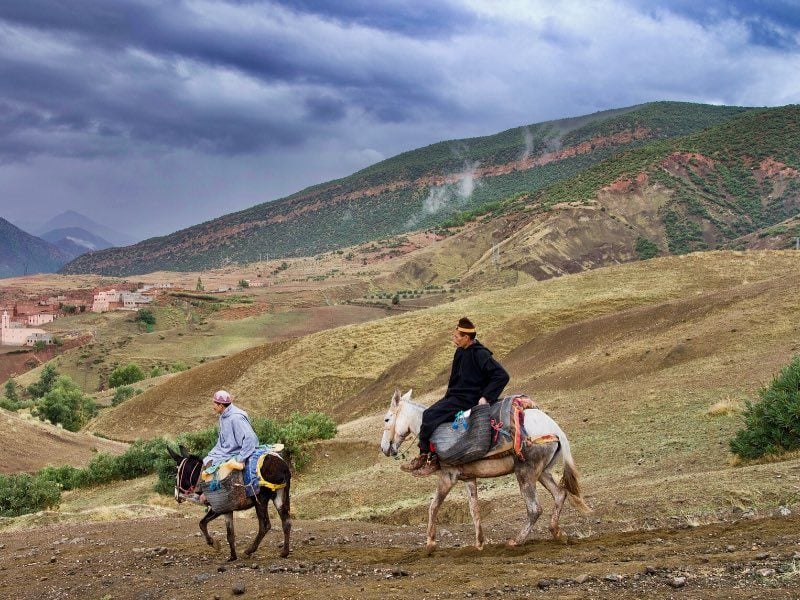
Shop for Photography Gear before Heading to Morocco
In Morocco, it can be difficult to find camera equipment. Though shops, such as FNAC, in the bigger cities will have a limited selection of cameras, lenses, and accessories, you are best served purchasing everything you need before you go. Here is a list of affiliate links to recommended gear on Amazon if you’re looking to purchase any of the products discussed on this page before your travels:
Sony Kit:
- Sony a7 III Full-Frame Mirrorless Interchangeable-Lens Camera with 3-Inch LCD, Black
- Sony 24-105mm f4 G OSS Standard Zoom Lens
- Zeiss 35mm f2.8 Sonnar Full Frame Prime Lens
- Sony 70mm-300mm f4.5-5.6 Lens G OSS Zoom Lens
- Sony 200-600mm f5.6-f6.3 G OSS Telephoto Zoom Lens
Fuji Kit:
- Fuji X-T3 Mirrorless Interchangeable Digital Camera
- Fujinon XF16-55mm f2.8 Standard Zoom Lens
- Fuji 23mm (35mm equivalent) f1.4 Prime Lens
Essentials
- Gobe Glass Cleaning Kit
- VSGO Sensor Cleaning Kit
- AKWOX Tempered Glass Screen Protector
- Peak Design Camera Strap
- Sony Tough G-Series SD Card – 64gb
- Sony Tough G-Series SD Card – 128gb
- Samsung T7 Touch Portable SSD drive – 1TB
- Apple SD Card Reader
- US to Europe Plug Adapter
- Zeiss 77mm UV Filter
- Gobe 77mm Polarizing Filter
- Gobe 77mm ND Filter Kit (4 Filters)
- Sony Z-Series Rechargeable Battery (extra)
- Day Bag: LowPro Passport Sling III
- Manfrotto Pixi Mini Tripod
- Manfrotto Compact Travel Tripod with 3-Way Head

Photography in Morocco can be just as challenging for professionals as it is for amateurs. However, by following the above tips, you will have a great chance to capture the sort of images that will make your friends back home truly envious as you post updates of your journey.
Just remember—even though you’re shooting, it’s not a war!
Have fun, keep that smile on your face and be as agreeable as possible. Along with that big scoop of patience you packed with you, your agreeable demeanor and big smile are the best gear any photographer could possibly pack. With a little empathy, all the patience you can muster, and a lot of a discretion, you will be nabbing those Instagrammable moments and cherished memories on your upcoming trip to Morocco!
About the Author
 Text and photos by award-winning writer, photographer, and Morocco expert, Lucas Peters. After spending years traveling to the distant corners of Morocco and writing about his adventures, he penned the best-selling guidebook Moon Morocco as well as Marrakesh and Beyond. He lives in Tangier with his family.
Text and photos by award-winning writer, photographer, and Morocco expert, Lucas Peters. After spending years traveling to the distant corners of Morocco and writing about his adventures, he penned the best-selling guidebook Moon Morocco as well as Marrakesh and Beyond. He lives in Tangier with his family.

